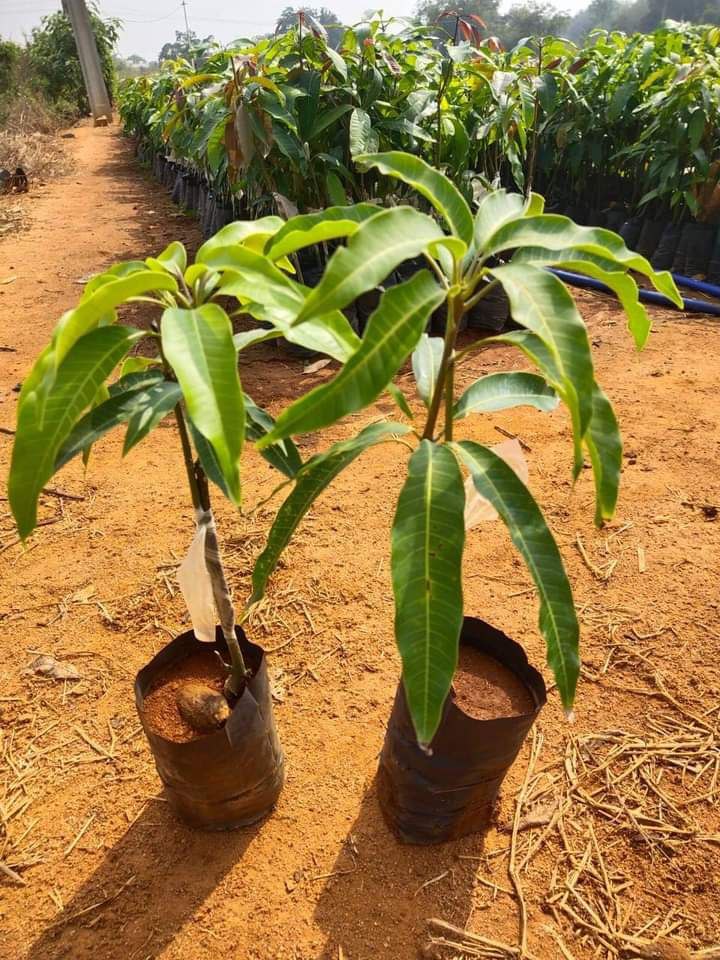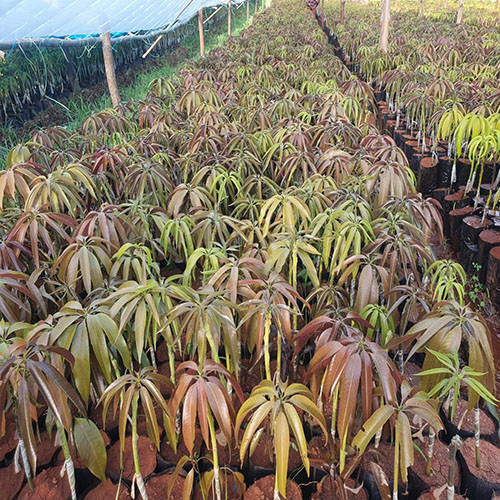Alfanso Mango Plants
Alphonso mango plants, also known as Hapus mangoes in some regions, are highly prized for their exceptional flavor and aroma. Here’s a comprehensive guide to growing and caring for Alphonso mango plants:
1. Origin and Characteristics:
- Origin: Alphonso mangoes originate from the Ratnagiri region in Maharashtra, India. They are also grown in parts of Gujarat, Karnataka, and other tropical regions.
- Fruit Characteristics: Alphonso mangoes are medium to large in size with a distinctive golden-yellow skin when ripe. The flesh is smooth, fiberless, and very sweet with a rich, aromatic flavor. They are often regarded as one of the best-tasting mango varieties.
2. Growing Conditions:
- Climate: Alphonso mango plants thrive in tropical and subtropical climates. They require warm temperatures and are sensitive to frost. They need a dry, sunny environment for optimal growth and fruiting.
- Soil: These plants prefer well-drained soil rich in organic matter. Sandy loam or loamy soil with a slightly acidic to neutral pH (6.0 to 7.5) is ideal.
- Watering: Regular watering is crucial, especially during the growing and fruiting seasons. While mature trees are somewhat drought-tolerant, they should be watered adequately during dry spells. Avoid waterlogging as it can lead to root rot.
- Sunlight: Full sun exposure is essential for Alphonso mango plants. They need at least 6-8 hours of direct sunlight each day to thrive and produce high-quality fruit.
3. Planting and Care:
- Planting: The best time to plant Alphonso mango trees is during the monsoon season or just before the rainy season. Prepare the planting hole to be twice as wide and deep as the root ball, and enrich the soil with organic compost.
- Spacing: Space the trees about 15 to 20 feet apart to allow for proper growth and airflow. This spacing helps reduce competition and the risk of disease.
- Fertilization: Apply balanced fertilizers regularly during the growing season. Organic matter such as compost or well-rotted manure can also be used to maintain soil fertility.
- Pruning: Prune the trees to shape them, remove dead or diseased branches, and improve air circulation. Proper pruning enhances fruit quality and reduces the risk of diseases.
4. Pests and Diseases:
- Pests: Common pests affecting Alphonso mango plants include mango hoppers, mealybugs, aphids, and fruit flies. Regular monitoring and appropriate pest control measures, such as organic sprays or insecticides, can help manage these issues.
- Diseases: The plants may be susceptible to diseases like anthracnose, powdery mildew, and bacterial spots. Implement good cultural practices, avoid overhead watering, and use fungicides as needed to prevent and control these diseases.
5. Harvesting:
- Timing: Alphonso mangoes are typically harvested when they have reached full size and the skin color changes to a vibrant yellow. The fruit should be firm yet slightly yielding to gentle pressure.
- Method: Harvest the mangoes carefully to avoid bruising. Use a sharp knife or pruning shears to cut the fruit from the tree, leaving a small portion of the stem attached to prevent sap burn.

.jpg)

.jpg)

